search
date/time
 | North East Post Weekend Edition |
Phil Hopkins
Commissioning Editor
@philhopkinsuk
12:00 AM 25th October 2025
travel
Ghostly Guests At The Queen Hotel!
But, be warned, if you fall into the trap of scrolling through your phone to discover ‘The 10 best things to see in Chester’, you are in grave danger of missing one of the diamonds in this Roman city’s bejewelled crown.
Born in Cheshire, he spent four years as an assistant to the sculptor John Francis, marrying his daughter, Mary, in 1840, and went on to become not only one of the ‘Empress of India’s’ favourite sculptors, producing work for the Great Exhibition of 1851, but principal designer behind the Poets’ Fountain near Hyde Park Corner, as well as other London masterpieces.
“Wow,” said Mrs Hopkins as I extolled the virtues of Mr Thornycroft. “And who’s that just across?” she asked, holding off from entering the hotel’s front door, whilst pointing to a life-size bronze located even closer to the railway station.
It was only later that I had the happy coincidence of bumping into Peter Cocker from the Thomas Brassey Society, which was holding its AGM at the Queen Hotel. Its members were responsible for Andy Edwards’ magnificent bronze tribute to the late engineer and constructor.
A timely meeting with Peter Cocker
Parking his rhetorical question, I decided to investigate further and went on to discover that despite losing its magnificent roof in the resulting flames – no cause for the fire was ever established - the hotel continued to trade and, once reopened, had acquired a fourth floor as part of the unintended refit!
Somehow, it is impossible to separate the Queen Hotel from the area’s rail heritage, Thomas Brassey being a case in point.
Peter pointed to a pop-up banner by his side in one of the hotel’s conference rooms. “Have a read,” he urged.
It proudly extolled a list of Monsieur Brassey’s achievements: he built one third of the railways in the UK, three quarters of the railways in France, 1 in 20 miles of the world railway network at the time, the Thames Embankment, water supply systems in cities such as Rio de Janeiro and Calcutta…..and so the list went on.
When he died from cancer aged 65 in 1870, his estate was worth £5m+, an incredible figure at the time.
Even now, constructor, Thomas Brassey and hotel designer Mr TM Penson’s legacy are still very much evident in this magnificent brick and stucco Italianate building, where one of the most breathtaking features is its central staircase to the rear of reception.
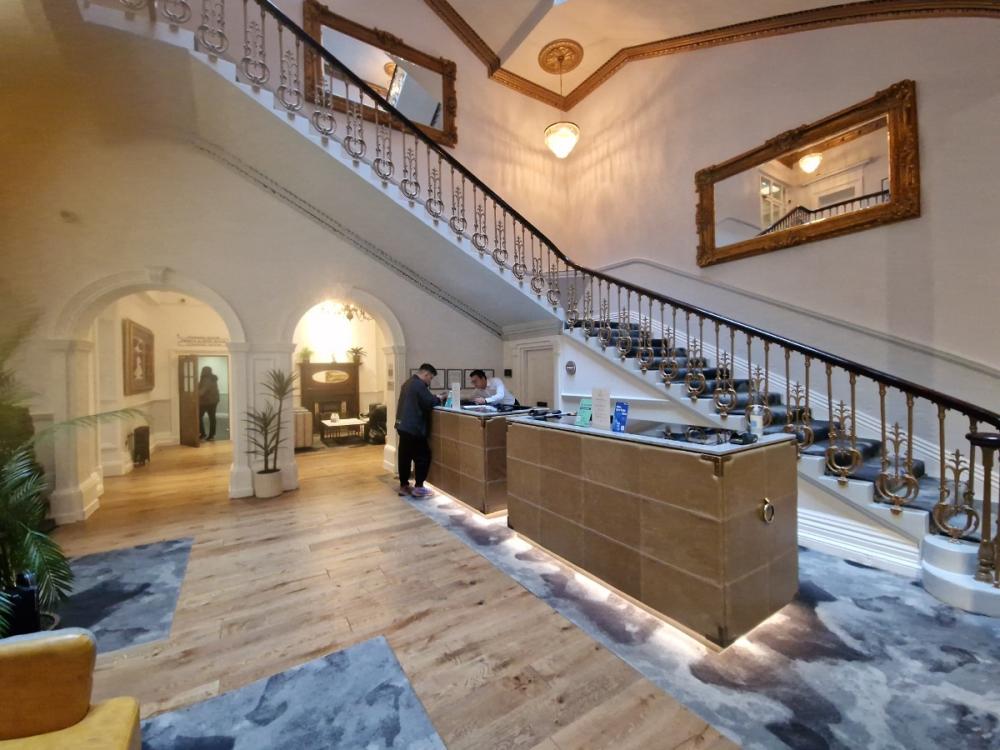
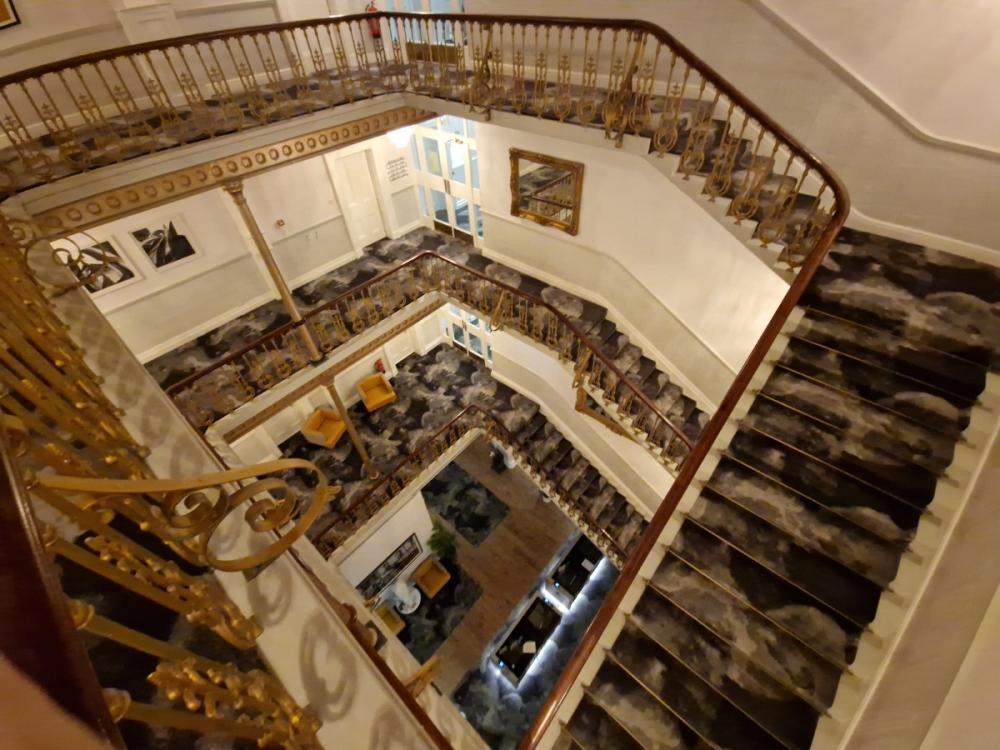
As you climb the stairs higher and higher into the heart of this magnificent structure, the large reception desk simply diminishes in size but never disappears from view, the building always maintaining the huge sense of space that so many Victorian edifices were famous for.
When it first opened in summer 1860, the Press at the time reported ‘the….cookery was perfect, the wines were excellent and the attendance all that could be desired.’
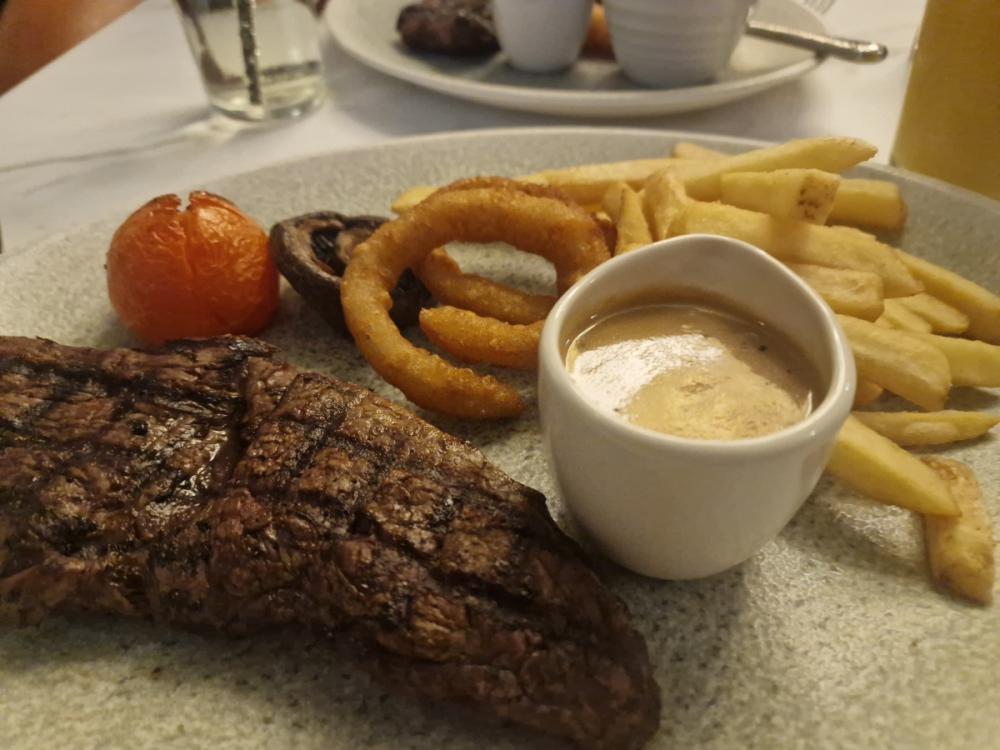
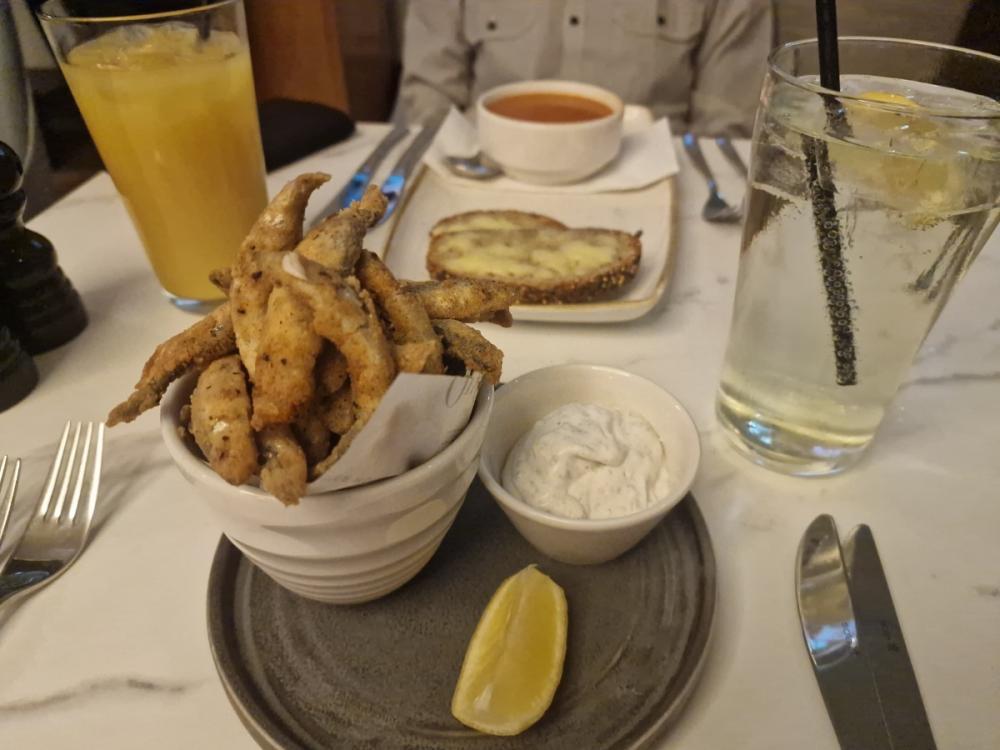
Soon after reports of ghostly goings on at the hotel would start to manifest!
It is reported that the Queen Hotel has long been haunted by a host of supernatural beings: a baby crying in an area on the second floor, thought to have once been a nursery.
Female guests have also recounted stories of a little girl sneaking up on them as they fill their bathtub, only to pull their hair before hastily pedalling off on a tricycle!
But, if you manage to get through the night without fear of phantoms arriving with a midnight cuppa, then a fine brekkie awaits in the Kings Grill where a serve yourself rule applies across a range of tasty options.
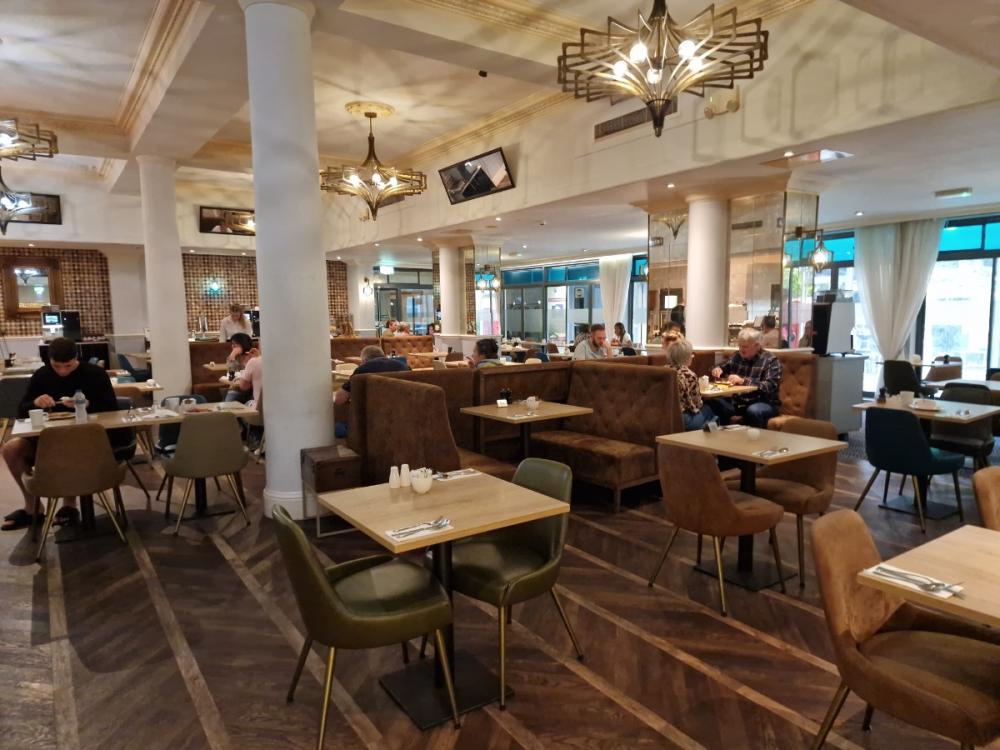
Soon they were exchanging pleasantries in their native Tagalog until I interrupted: “Well ladies, I’m going to leave you two chatting away whilst I get breakfast!” My wife took the hint and soon we were deciding how to spend the rest of the day over morning coffee.
Chester is a city steeped in history, its origins firmly rooted in the Roman era when it was founded as the fortress of Deva Victrix in 79 AD. Evidence of this legacy is visible in the ancient City Walls, the most complete in Britain, and the remains of the Roman Amphitheatre.
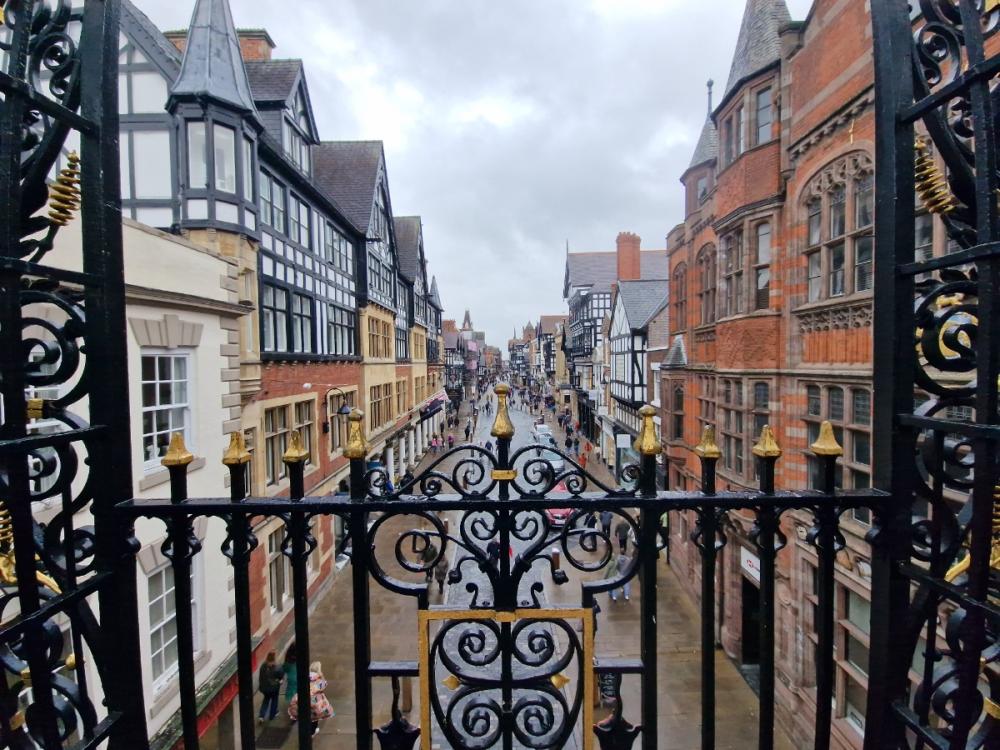
All praise the wonderful Cathedral
The city's unique architectural highlight is the Chester Rows, medieval two-tiered galleries of shops, unique in Europe.
These continuous, covered walkways offer an unusual shopping experience, often featuring striking black and white timber-framed Victorian architecture façades added during the Gothic Revival, which conceal the older structures beneath.
The Eastgate Clock

The Chester Rows
Dominating the Eastgate section of the walls is the famous, highly ornate Eastgate Clock. Erected in 1899 to commemorate Queen Victoria's Diamond Jubilee, it is reportedly the second most photographed clock in the UK after Big Ben.
The magnificent Chester Cathedral, originally a Benedictine abbey, showcases a blend of architectural styles from Norman to Gothic, making it a beautiful and historically significant focal point.
We were due to dine back at the hotel that night; the Queen’s historical pedigree had caught my imagination: Charles Dickens had once laid his head there but what of London socialite Lillie ‘The Jersey Lily’ Langtry?
She was a British socialite, stage actress and producer, however, as a woman of great beauty and charm, she also became the poster girl for Pears Soap and was the first celebrity to endorse a commercial product.
“Did we bring any shower gel,” shouted Mrs H from the splendour of our large en suite bathroom. I stopped short of telling her about the Lillie Langtry 'soap' connection; it would take too long to explain such an iconic aspect of UK history to one of Britain’s adopted daughters, even if Mrs H did have a British passport! I passed the shower gel.
The Queen Hotel enjoys a commanding position on the outskirts of town, however, the walk into the centre of Chester is just 15 minutes and, en-route, you will pass some splendid old mill architecture, now restaurants and the like and, if you get chance to stroll out in the dusk of the evening, you are guaranteed to get some superb photos.
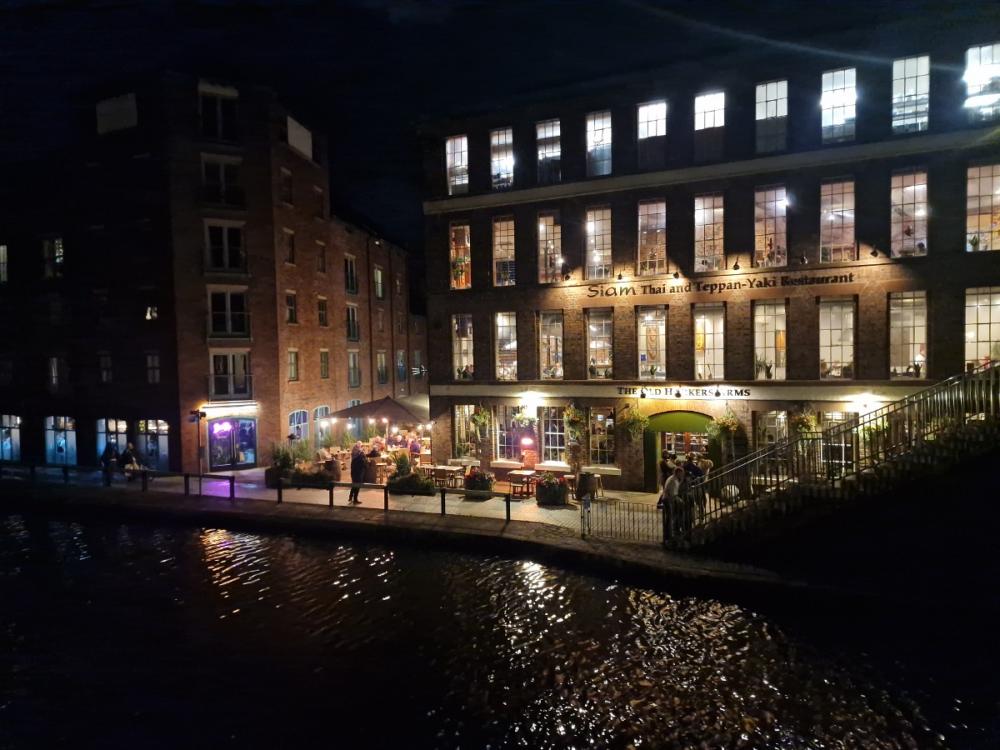
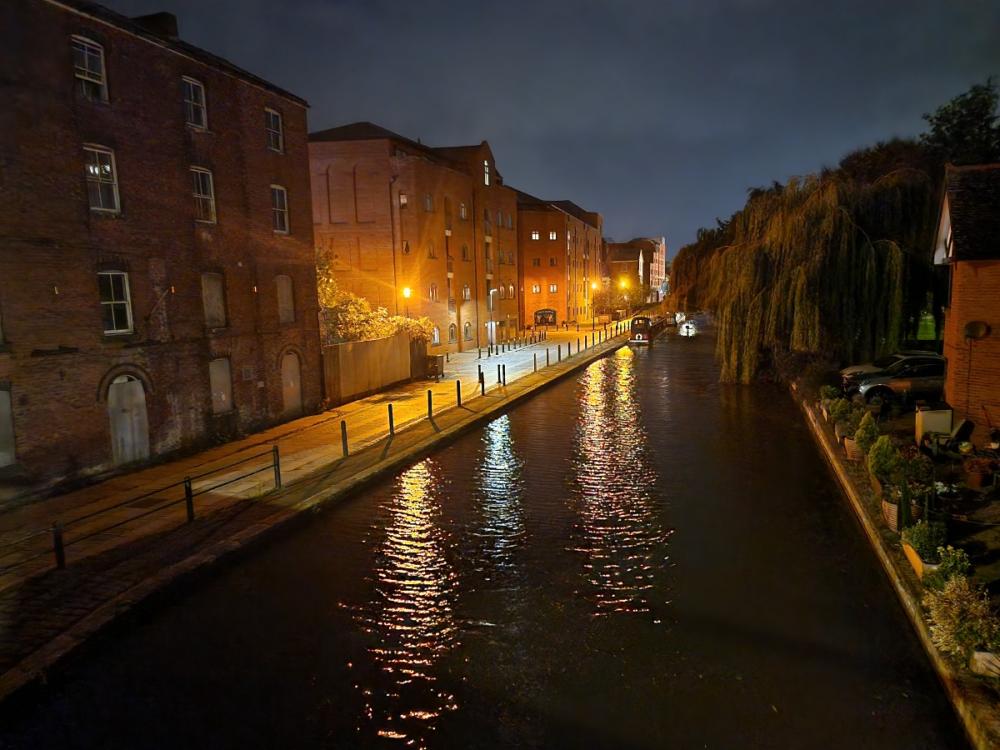
It is a property that teams with history, just like the city it inhabits, and if you look beyond the splendour of the modern – the evening dinner restaurant, the winding corridors and the hotel’s modern lounges – open your eyes and imagine, for in that moment the ghost of Thomas Brassey may enter your soul and, for a second, you will start to understand why Chester’s Queen Hotel will never be ‘just another hotel’.
www.bestwestern.co.uk